#Adélaïde Labille-Guiard
Text
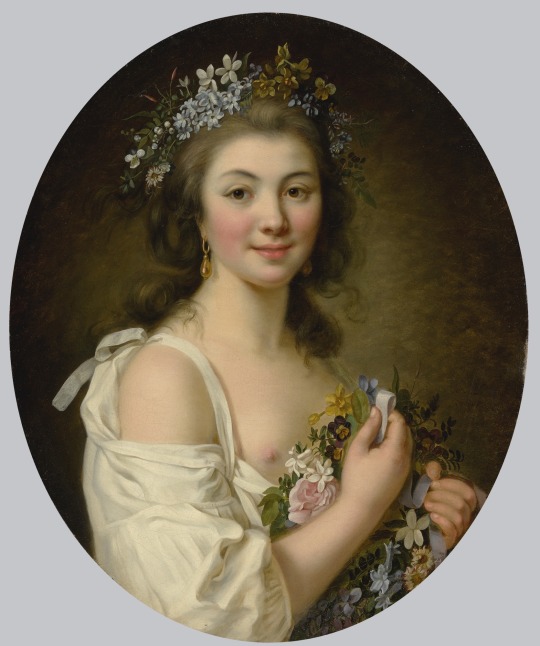
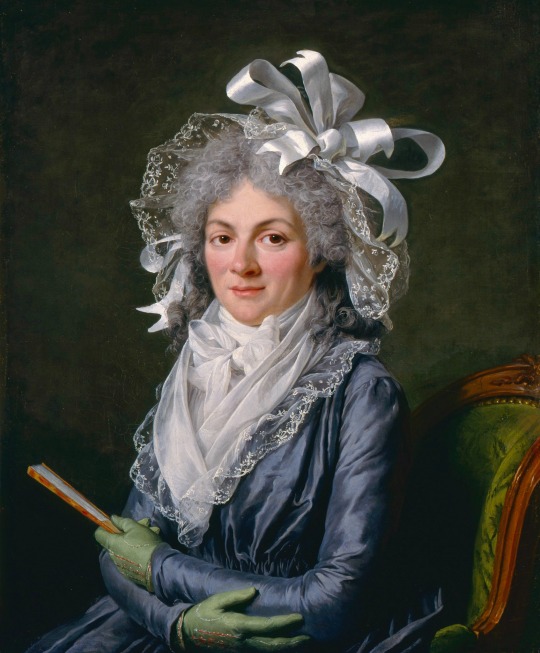
Stéphanie Félicité, Marquise de Sillery, Comtesse de Genlis (25 January 1746 — 31 December 1830)
Madame de Genlis was a French writer who maintained a long correspondence with Napoleon and was on the government’s payroll from 1801 to 1814. There is a lot of debate about the nature of the correspondence. Some contemporaries and historians believe she was Napoleon’s spy.
Lady Morgan asked Madame de Genlis about this:
“Buonaparte,” she said, “was extremely liberal to literary people — a pension of four thousand francs, per annum, was assigned to all authors and gens-de-lettres, whose circumstances admitted of their acceptance of such a gratuity. He gave me, however, six thousand, and a suite of apartments at the Arsenal. As I had never spoken to him, never had any intercourse with him whatever, I was struck with this liberality, and asked him what he expected I should do to merit it? When the question was put to Napoleon, he replied carelessly, ‘Let Madame de Genlis write me a letter once a month.’ As no subject was dictated, I chose literature, but I always abstained from politics.”
Source: France, Lady Morgan, published 1817, p. 360
An outline of her life and career can be read in Destins de Femmes, French Women Writers, 1750-1850 by John Claiborne Isbell, (published 2023).
#Madame de Genlis#Genlis#lady Morgan#Napoleon#napoleon bonaparte#napoleonic era#women writers#first french empire#french empire#women’s history#art#French art#lemoine#Adélaïde Labille-Guiard#Marie-Victoire Lemoine#female writers#1800s#history
45 notes
·
View notes
Photo
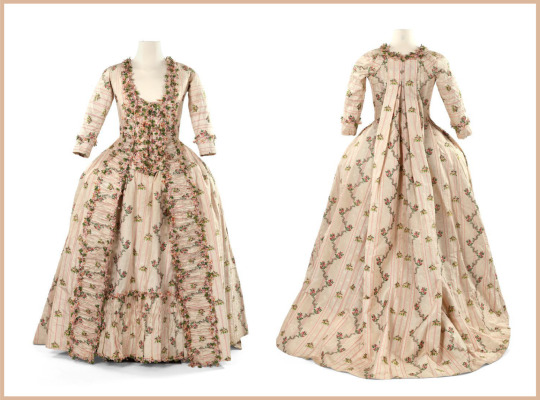

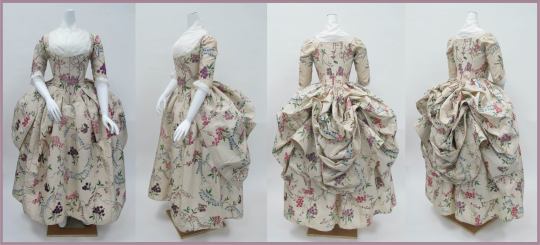

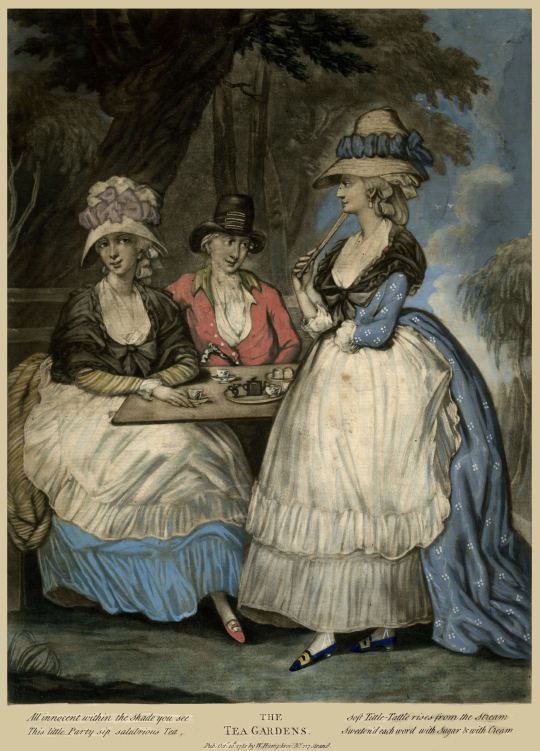




Some more 1780s big hair fashion -
Top left ca. 1780 Robe à la française (location ?). From fripperiesandfobs.tumblr.com-page/2 1548X1146.
Top right ca. 1780 Robe à l'anglaise (Museo de la Moda - Santiago, Chile). From 18thcenturylove.tumblr.com-tagged-robe+a+l'anglaise-page-2 1678X1250.
Second row ca. 1780 Four views of robe à la Polonaise (Metropolitan Museum of Art - New York City, New York, USA). From their Web site 2893X1315.
Third row ca. 1780 Robe à la Polonaise (Metropolitan Museum of Art - New York City, New York, USA). From their Web site 900X1200.
Fourth row 1781 The Tea Garden by ? (British Museum - London, UK). From their Web site 3968X5518.
Fifth row 1781 (probable exh' date) Adélaïde Genet, Madame Auguié (1758-1794), sister of Mme. Campan by Anne Vallayer-Coster (Sotheby's - 8Jul09 auction Lot 41). From their Web site; fixed spots w Pshop 3428X4290.
Sixth row 1781 Ernestine Fredérique, Princess de Croy by Élisabeth-Louise Vigée-Lebrun (Nationalmuseum - Stockholm, Sweden). From Wikimedia 1067X1349.
Seventh row 1783 Madame Charles Mitoire, née Christine-Geneviève Bron (1760-1842), avec ses enfants by Adélaïde Labille-Guiard (Getty Museum - Los Angeles, California, USA). From their Web site; fixed spots & edges w Pshop 2332X2965
Eighth row ca. 1785 Princesse de Lamballe by French school (location ?). From servimg.com-view-18669219-6356 812X973.
#1780s fashion#Louis XVI fashion#Georgian fashion#Rococo fashion#robe à la française#robe à l'anglaise#robe à la polonaise#hat#hat ribbons#apron#over-skirt#Adélaïde Genet#Anne Vallayer-Coster#Princess de Croy#Adélaïde Labille-Guiard#nursing dress#Élisabeth-Louise Vigée-Lebrun#princess de Lamballe#bouffant coiffure#fichu#zone bodice
57 notes
·
View notes
Text

Oil Painting, 1790, French.
By Adélaïde Labille-Guiard.
Portraying the Duchess d’Aiguillon in a pale blue dress.
Sotheby’s.
https://www.sothebys.com/en/auctions/ecatalogue/2018/tableaux-omp-19me-sculpture-pf1809/lot.67.html
#1790s painting#Adélaïde Labille-Guiard#duchesse d’aguillon#1790s france#1790s hair#constitutional monarchy#sotheby’s
34 notes
·
View notes
Photo
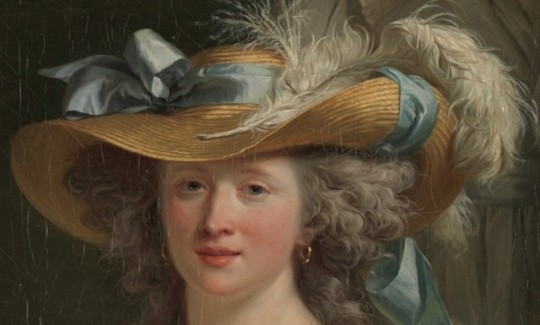
Adélaïde Labille-Guiard, Self-portrait with two pupils detail, 1785
#adélaïde labille-guiard#labille-guiard#painting#art#art details#adelaide labille guiard#labille guiard#history of fashion#18th century art
119 notes
·
View notes
Photo
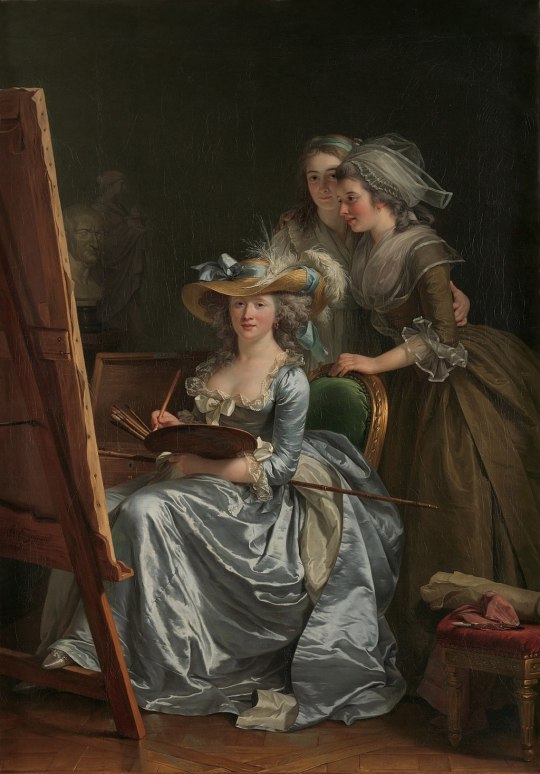
Self-Portrait with Two Pupils, by Adélaïde Labille-Guiard, 1785 (Rococo or Neoclassicism)
82 notes
·
View notes
Photo

ab. 1795 Adélaïde Labille-Guiard - Portrait of a Man
(Dallas Museum of Art)
50 notes
·
View notes
Text
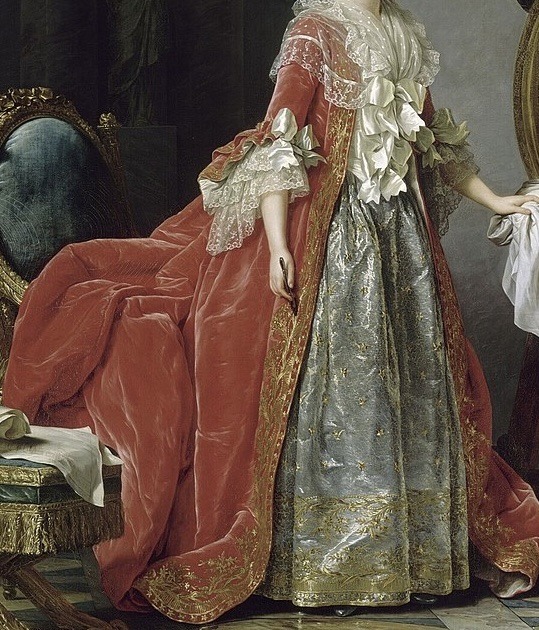
Portrait of Madame Adélaïde, C. 1787
Adélaïde Labille-Guiard
#historical art#historical painting#details#1780s#18th century#art#painting#portrait#history#fashion#historical fashion#oil painting#Adélaïde Labille-Guiard
4 notes
·
View notes
Photo

Madame de Genlis by Adélaïde Labille-Guiard, 1790
Stéphanie Félicité du Crest (Madame de Genlis) was born into a family of minor nobility on January 25, 1746 at Champcéry near Autun in Burgundy. She became a prolific writer whose works were widely read throughout Europe, as well as in her native France. As governor to the children of the Orléans branch of the royal family – a rare position for a woman – she became known for her innovative approach to education. After losing her husband and fortune in the French Revolution, Madame de Genlis turned to Napoleon Bonaparte for support. In return, Napoleon required her to write him regular letters. For details, see “Was Madame de Genlis Napoleon’s spy?”
19 notes
·
View notes
Text

بورتريه ذاتي مع تلميذتين، ماري غابرييل كابيه وماري مارغريت كارو دي روزموند، رسمت بواسطة أديلايد لابيل غويار، تظهر الفنانة إلى جانب اثنتين من طلابها. يعد هذا العمل الفني تمثيلاً أيقونياً للتعليم الفني للإناث خلال أوائل أوروبا الحديثة. عندما انضمت لابيل-غويار وإليزابيث فيجي لو برون إلى الأكاديمية الملكية في عام ١٧٨٣، قامت الأكاديمية بتقييد عدد العضويات المتاحة للفنانات بأربعة فقط. يُعتقد أن هذه البورتريه والتي تم استقبالها بحرارة في صالون عام ١٧٨٥، تناصر حقوق الفنانات. مثل العديد من الفنانين في عصرها، ارتدت لابيل-غويار في اللوحة بإسراف لم يكن من الممكن أن يكون عملياً في بيئة الاستوديو. والجدير بالذكر أنه بإعتبارها فنانة بورتريه، تمتعت بالرعاية الكاملة من قبل بنات لويس الخامس عشر، والمعروفات باسم سيدات فرنسا.
Self-Portrait With Two Pupils
Adélaïde Labille-Guiard
1785
2 notes
·
View notes
Text

Adélaïde Labille-Guiard (1749-1803), Portrait de la duchesse d'Aiguillon
0 notes
Photo
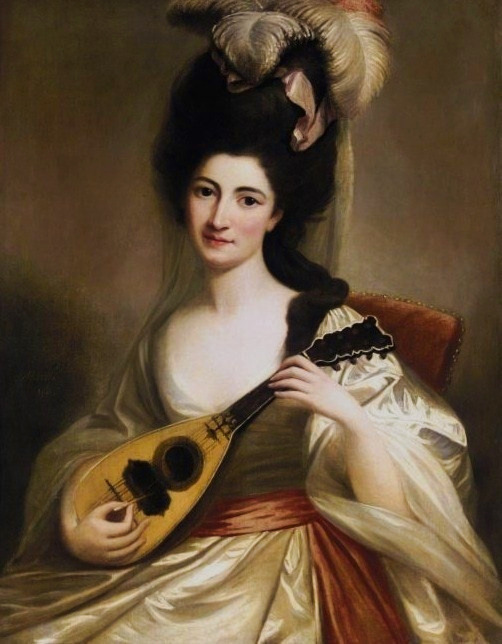





1780s dresses -
Top left 1782 Lady playing a mandolin by David Martin (location ?). From tumblr.com/sims4rococo76 502X644.
Top right ca. 1782 John Moultrie III and Family by John Francis Rigaud (Gibbes Museum of Art - Charleston, South Carolina, USA). From weeberry.tumblr.com/post/128775612786/history-of-fashion-ab-1782-john-francis-rigaud/amp 610X782.
Second row Lady by Adélaïde Labille-Guiard (auctioned by Sotheby's). From tumblr.com/antiquelaceartist 1280X1582.
Third row left 1783 Christine-Geneviève, Madame Mitoire, with her children Alexandre-Laurent and Charles-Benoît by Adélaïde Labille-Guiard (location ?). From tumblr.com/sims4rococo76 802X1023.
Third row right 1788 Maria Catalina de Urrutia with her son by José Campeche (Museo de Arte de Ponce - Ponce, Puerto Rico, USA). From tumblr.com/historicalfashionnerd 2048X2872.
Fourth right 1788 Elisabeth-Philippe-Marie-Hélène de France, dite Madame Elisabeth by Adélaïde Labille-Guiard (Versailles). From chateauversailles.fr-decouvrir-histoire-madame-elisabeth size 2384X2968.
#1780s fashion#Louis XVI fashion#Rococo fashion#Georgian fashion#David Martin#high coiffure#hair feathers#scoop neckline#sash#John Francis Rigaud#curly hair#bouffant coiffure#bertha#apron#Adélaïde Labille-Guiard#jeweled hat#lapels#laced bodice#Madame Mitoire#hair flowers#modesty piece#Maria Catalina de Urrutia#José Campeche#feathered hat#V neckline#lace bertha#elbow-length sleeves#V waistline#petticoat#Madame Elisabeth
16 notes
·
View notes
Text
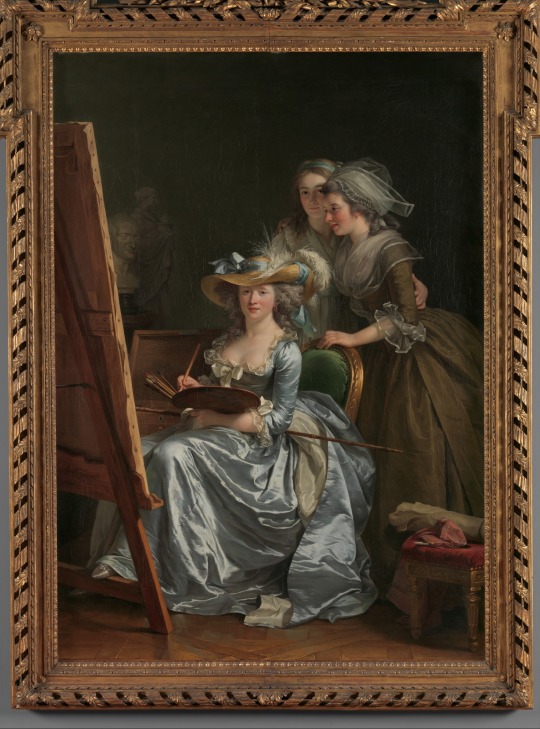
Oil Painting, 1785, French.
By Adélaïde Labille-Guiard.
Portraying the artist with two pupils, Marie Gabrielle Capet and Marie Marguerite Carreaux de Rosemond.
Met Museum
#Adélaïde Labille-Guiard#Marie Gabrielle Capet#Marie Marguerite Carreaux de Rosemond#oil painting#painting#1785#1780s#1780s painting#1780s France#France#met museum#1#artist
41 notes
·
View notes
Text
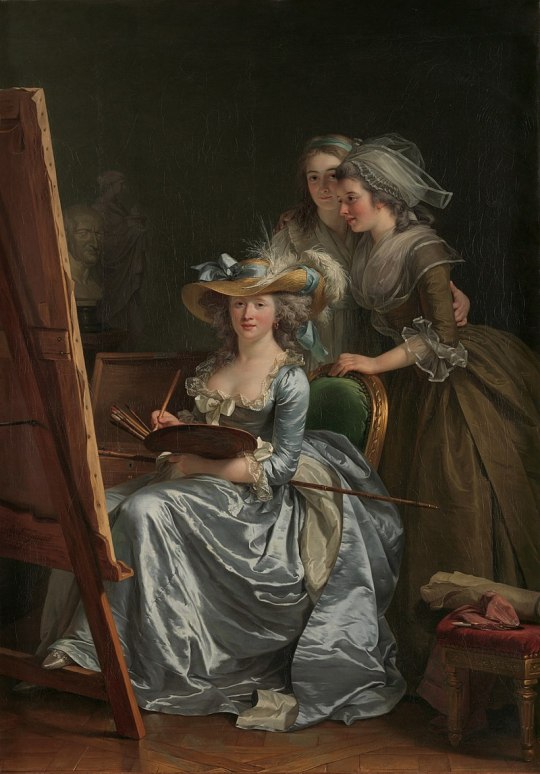
Self-Portrait with Two Pupils, Marie-Gabrielle Capet and Marie-Marguerite Carreaux de Rosemond (1785) by Adélaïde Labille-Guiard
(more info)
#Self-Portrait with Two Pupils#1789#1700s#French Revolution#Adélaïde Labille-Guiard#art#sketch#Miss Cromwell#Marie Capet#Marie-Marguerite Carreaux de Rosemond#feminism#women's rights
4 notes
·
View notes
Photo

Portrait of a woman by Adélaïde Labille-Guiard, 1787
60 notes
·
View notes
Photo

Adélaïde Labille-Guiard, Self-portrait with Two Pupils detail, 1785
#adélaïde
labille-guiard#adélaïde labille guiard#labille guiard#labille-guiard#painting#art#18th century art#history of fashion#art details#painting details
164 notes
·
View notes
Text

Adélaïde Labille-Guiard (1749-1803)
"Portrait of Madame Charles Mitoire with Her Children" (1783)
Pastel, on three sheets of blue paper, mounted on canvas
Neoclassical
Located in the Getty Museum, Los Angeles, California, United States
This is no ordinary portrait of an eighteenth-century lady, for Madame Mitoire here bears a breast to nurse her infant son Charles-Benoît. Though its composition echoes traditional representations of the Holy Virgin and Child with Saint John the Baptist, this portrait also signals the modernity of its subject and her approach to motherhood. Published in 1762, Jean-Jacques Rousseau’s celebrated Enlightenment treatise on education and child-rearing, "Émile," implored women of all classes to cultivate more intimate bonds with their children and, above all, to breast-feed them personally, rather than retaining the services of a wet nurse, as most wealthy families did at the time. A vogue for breast-feeding swept Europe, and genteel women retreated from public life, into the domestic sphere to fulfill what Rousseau called “their first duty." Depicting a nursing mother, the portrait may also allude to Rousseau’s recommendations in its presentation of the infant, unencumbered by swaddling clothes (of which Rousseau strongly disapproved), and perhaps also in its inclusion of a glass of wine on the table at left (Rousseau’s tract draws a contrast between milk, “our first nourishment,” and wine, an acquired taste).
#drawing#art#artwork#genre painting#family portrait#adélaïde labille guiard#adelaide labille guiard#pastel#pastel drawing#drawings#fine art#neoclassical#neoclassicism#french artist#woman artist#women artists#female artists#mother and baby#child#children#motherhood#history#parenting#clothing#clothes#blue dress#dresses#1780s#late 1700s#late 18th century
96 notes
·
View notes